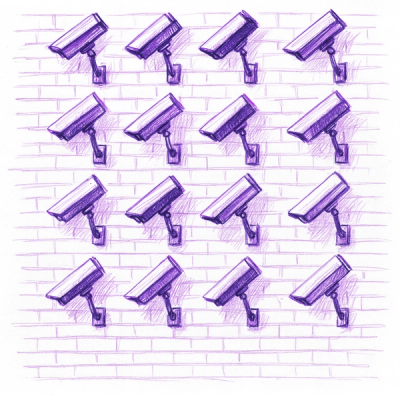
Research
/Security News
Toptal’s GitHub Organization Hijacked: 10 Malicious Packages Published
Threat actors hijacked Toptal’s GitHub org, publishing npm packages with malicious payloads that steal tokens and attempt to wipe victim systems.
django-automated-logging
Advanced tools
Django Database Based Automated Logging - finally solved and done in a proper way.
Notice: Most of this will be moved into a wiki.
TL;DR: DAL is a package to automatically track changes in your project, ranging from simple logging messages, to model changes or requests done by users.
You can decide what you want to do and how. DAL allows fine-grained customization and filtering with various methods.
Django Fully Automated Logging - finally solved and done properly.
How to install?
pip install django-automated-logging or poetry add django-automated-logging
The goal of DAL is to provide an easy, accessible and DRY way to log the inner working of you applications. Ultimately giving you the chance to easily see what is happening without excessive manual print/logging statements.
The application uses minimal requirements and is performant.
The application facilitates the built-in logging mechanic
by providing a custom handler, that just needs to be added to the LOGGING configuration.
DAL uses native Django signals to know what is happening behind the scenes without injecting custom code.
You can also configure DAL to only log to a file and not to a database. You just need to enable DAL and not include the custom logging handler.
Initial Configuration is via your projects settings.py
INSTALLED_APPS append: 'automated_logging'MIDDLEWARE append: 'automated_logging.middleware.AutomatedLoggingMiddleware'LOGGING section handlers add:
'db': {
'level': 'INFO',
'class': 'automated_logging.handlers.DatabaseHandler',
}
LOGGING section loggers add: (only required if database logging desired)
'automated_logging': {
'level': 'INFO',
'handlers': ['db'],
'propagate': True,
},
'django': {
'level': 'INFO',
'handlers': ['db'],
'propagate': True,
},
python manage.py migrate automated_loggingLOGGING configuration details are just recommendations.
When migrating from 5.x.x to 6.x.x the logs are converted between the two versions.
This can take a while, and depending on the size of your database might lead to 'Server has gone away’ errors on
MySQL.
You can increase the max_allowed_packet variable in your MySQL configuration to fix this, or
set DAL_SKIP_CONVERSION = true as an environment variable to skip the conversion.
Further configuration can be done via the variable AUTOMATED_LOGGING. The defaults are:
AUTOMATED_LOGGING = {
"globals": {
"exclude": {
"applications": [
"plain:contenttypes",
"plain:admin",
"plain:basehttp",
"glob:session*",
"plain:migrations",
]
}
},
"model": {
"detailed_message": True,
"exclude": {"applications": [], "fields": [], "models": [], "unknown": False},
"loglevel": 20,
"mask": [],
"max_age": None,
"performance": False,
"snapshot": False,
"user_mirror": False,
},
"modules": ["request", "unspecified", "model"],
"request": {
"data": {
"content_types": ["application/json"],
"enabled": [],
"ignore": [],
"mask": ["password"],
"query": False,
},
"exclude": {
"applications": [],
"methods": ["GET"],
"status": [200],
"unknown": False,
},
"ip": True,
"loglevel": 20,
"max_age": None,
},
"unspecified": {
"exclude": {"applications": [], "files": [], "unknown": False},
"loglevel": 20,
"max_age": None,
},
}
You can always inspect the current default configuration by doing:
from pprint import pprint
from automated_logging.settings import default
from automated_logging.helpers import namedtuple2dict
pprint(namedtuple2dict(default))
Recommendation: include the globals application defaults as those modules can be particularly verbose or be
duplicates.
There are three different independent modules available request (for request logging), unspecified (for general
logging messages), and models (for model changes).
They can be enabled and disabled by including them in the modules configuration.
The loglevel setting indicates the severity for the logging messages sent from the module.
INFO (20) or DEBUG (10) is the right call for most cases.
New in 6.x.x: Saving can be batched via the batch setting for the handler.
New in 6.x.x: Saving can be threaded by thread: True for the handler settings. This is highly experimental
New in 6.x.x: every field in exclude can be either be a glob (prefixing the string with gl:), a regex (
prefixing the string with re:) or plain (prefixing the string with pl:). The default is glob.
You can explicitly exclude or include views/models, by using the new decorators.
from automated_logging.decorators import include_view, include_model, exclude_view, exclude_model
@include_view(methods=None)
@exclude_view(methods=[])
def view(request):
pass
@include_model(operations=None, fields=None)
@exclude_model(operations=[], fields=[])
class ExampleModel:
pass
include always takes precedence over exclude, if you use multiple include or exclude instead of overwriting
they will update/extend the previous definition.
operations can be either create, modify, delete. fields is a list model specific fields to be
included/excluded.
methods is a list methods to be included/excluded.
Class-Based Configuration is done over a specific meta class LoggingIgnore. Decorators take precedence over
class-based configuration, but class-based configuration takes precedence over AUTOMATED_LOGGING configuration.
class ExampleModel:
class LoggingIgnore:
complete = False
fields = []
operations = []
as described above operations and fields work the same way. complete = True means that a model is excluded no
matter what.
batch settings to the handlermax_age is now part of the settings.py configuration.maxage handler setting to automatically remove database entries after a certain amount of time.FAQs
Django Database Based Automated Logging - finally solved and done in a proper way.
We found that django-automated-logging demonstrated a healthy version release cadence and project activity because the last version was released less than a year ago. It has 1 open source maintainer collaborating on the project.
Did you know?

Socket for GitHub automatically highlights issues in each pull request and monitors the health of all your open source dependencies. Discover the contents of your packages and block harmful activity before you install or update your dependencies.

Research
/Security News
Threat actors hijacked Toptal’s GitHub org, publishing npm packages with malicious payloads that steal tokens and attempt to wipe victim systems.

Research
/Security News
Socket researchers investigate 4 malicious npm and PyPI packages with 56,000+ downloads that install surveillance malware.

Security News
The ongoing npm phishing campaign escalates as attackers hijack the popular 'is' package, embedding malware in multiple versions.